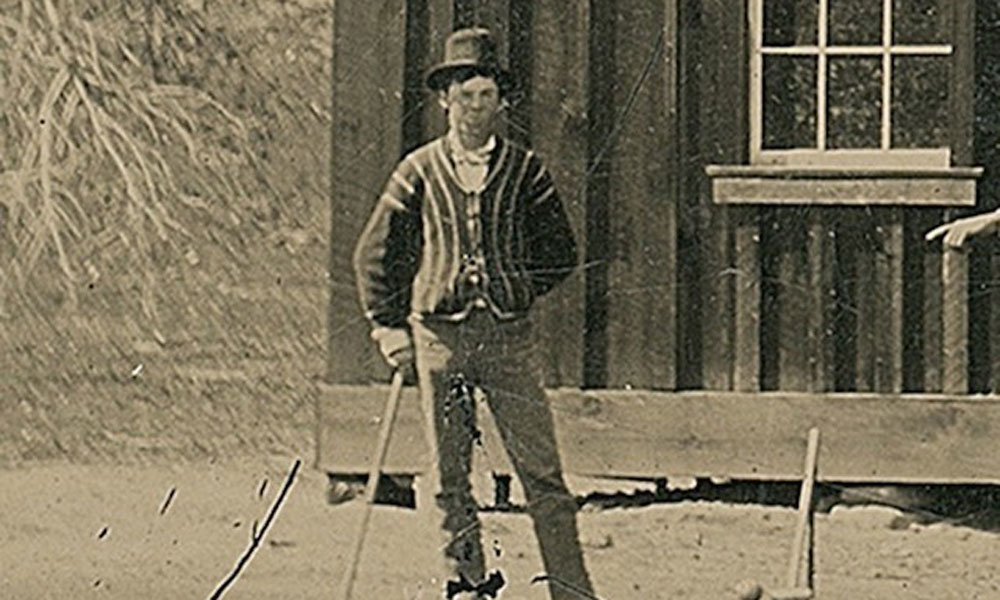 For all of you poor suckers not fortunate to live west of Independence, Missouri, or who find yourself in the crowded, humid East, fear not. You can find the West in them thar woods too.
For all of you poor suckers not fortunate to live west of Independence, Missouri, or who find yourself in the crowded, humid East, fear not. You can find the West in them thar woods too.
Head to Urbandale, Iowa, where the 500-acre outdoor Living History Farm museum covers 300 years of farming and is divided into three working farm sites, showcasing the Ioway Indians (circa 1700), white pioneers (1850) and horse-powered farms (1900). You’ll also find a replica 1875 farm-town, called Walnut Hill.
Most people come to Pella, Iowa, to celebrate tulips and Dutch windmills, but Western buffs know Pella as the boyhood home of frontier lawman Wyatt Earp. That home was restored to its 1850s appearance in 1966 and is part of a Pella Historical Society restoration project that includes 24 buildings in its historical village.
To the east, Indiana brings you the Eiteljorg Museum of American Indians and Western Art in Indianapolis. Founded by collector Harrison Eiteljorg, this museum isn’t just art; it’s history and culture. Don’t overlook Mihtohseenionki (People’s Place) gallery and its examination of the Delaware, Miami and Potawatomi Indians
of Indiana.
In Chillicothe, Ohio, “Tecumseh!” the story of the Shawnee Indian leader’s fight to defend his homeland in the late 1700s, comes alive—complete with cannon and horses—on the outdoor stages of the Sugarloaf Mountain Amphitheatre. It’s like you’re witnessing a novel by that master of frontier historical fiction, Allan W. Eckert. Well, Eckert did write this play, which debuted in 1973.
The gateway to the American West remains spectacular down South, in Middlesboro, Kentucky. Cumberland Gap National Historical Park brings you mountains, forests, waterfalls, caves, wildlife and history. Make sure you visit this historic Hensley Settlement on top of Brush Mountain. The restored settlement, which dates to 1845, includes a dozen homestead cabins, a springhouse, one-room schoolhouse and a blacksmith shop.
From Daniel Boone to Dolly Parton, east Tennessee’s history is explored in the excellent Museum of East Tennessee History in downtown Knoxville. It’s broad and exhilarating, especially the permanent exhibit “Voices of the Land: The People of East Tennessee.”
Andy “Old Hickory” Jackson was the hero of the Battle of New Orleans. He was the first “Western” president, the friend/rival of Davy Crockett and Sam Houston, a slave owner and probably the white man the Cherokee Indians revile the most. The Creeks don’t care much for him either. All of these stories are told at the Hermitage, the 1804 plantation of our seventh president, in Nashville.
When you reach Georgia, it’s hard to think of a better place to experience the West than the Booth Western Art Museum in Cartersville. You get the annual Southeastern Cowboy Festival and Symposium (held this October 25-28), plus artworks by historical stalwarts, modern masters and those still at it today.
As you make your way to our nation’s capital, stop at Appomattox Court House National Historical Park in Appomattox, Virginia. Who got the table on which Robert E. Lee and Ulysses S. Grant basically ended the Civil War? Hint: It wasn’t Joshua Chamberlain. My bet is he was miffed to see the soon-to-be-famous Little Big Horn Gen. George Custer ride off with it. Custer also received the flag of truce. Plus a whole lot of soldiers, North and South, went west after the war.
Located on the National Mall between the National Air and Space Museum and the Capitol, the National Museum of the American Indian in Washington, D.C. houses an extensive collection of American Indian arts and artifacts. One must-stop: The imagiNATIONS Activity Center, an interactive area featuring several hands-on activities.
Having attended Clemson-South Carolina athletic contests, Johnny D. Boggs knows how Western things can get back East.






